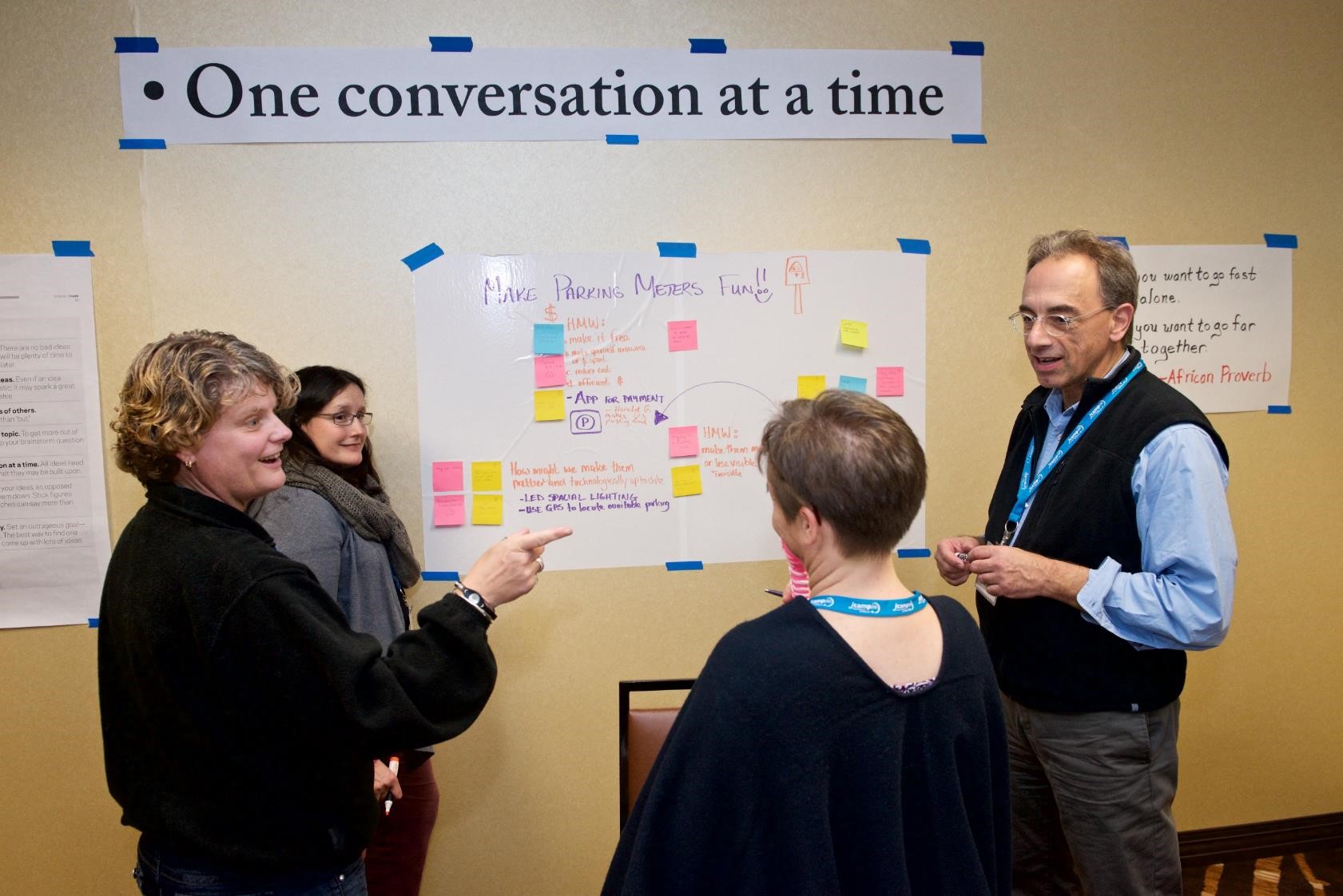
I’m currently participating in a Design Thinking project with the Harold Grinspoon Foundation’s PJ Library program. This project has me thinking more about
how Design Thinking can be helpful to camps.
An early stage of any Design Thinking process is called Empathy. As the name suggests, this is when you try to truly understand your target audience: What problems do they have? What are their needs? What do they want? This stage is all about listening.
In Design Thinking, listening includes observing your audience. Watching them go about their day to really see and experience their lives and obstacles. For example, the idea behind the popular Swiffer mop came from watching people try to mop their floors for hours and hours…until they found
one woman who would finish cleaning by using a damp paper towel on the ground.
Design Thinking also includes more traditional listening – asking open-ended questions to the audience and just listening to what they say. Listening to their dreams, their fears, their hopes, their needs. Empathetic listening that helps you get past your own biases and truly understand the needs and wants of the speaker. This listening can help you determine a problem that – if solved – would truly help that target audience.
Listening is for Fundraising, Too
Listening with empathy can be a powerful way to strengthen relationships with prospects and donors, too.
Asking questions and listening to donors and prospects can help you learn more about what they are passionate about, why they support camp, and how they might like to support camp in the future.
If a donor believes you are listening and truly care about how they feel and what they are interested in, you will help build a much stronger relationship with them.
Of course, following up with them later based on what you heard is a great way to show you were truly listening. Reach out to them when you can: “I know you are interested in X – I thought this recent blog post from camp would be relevant for you.”
How to Listen to Donors and Prospects
To listen to your donors and prospects, start with good questions. Consider this list of
20 camp-specific to ask your donors and prospects. Or draw from this
much longer list of potential questions that could be used for any organization.
Most importantly, listen. Be empathetic. Who knows what you’ll learn.
And when you get back to the office, keep track of any important, pertinent information in your database to help you better “know your donors.”
Bottom Line: Listening and empathy is important for both Design Thinking and fundraising success.
**
Written by Kevin Martone. Kevin is the Technology Program Manager with JCamp 180. His focus area is in applying technology (database management, communications) to support fundraising and outreach efforts. Kevin leads JTEC (JCamp 180 Training in Effective Communications) and co-leads Data2Donors, a program to help camps prioritize their database for improved Alumni outreach and fundraising.
**
Who we are: JCamp 180 is a program of the Harold Grinspoon Foundation (HGF). Our goal is to significantly enhance the long-term effectiveness of nonprofit Jewish camps in North America. To meet this goal, we provide affiliated Jewish camps with consulting services, annual conferences, shared resources, professional development, and matching grant opportunities. Find more at www.jcamp180.org